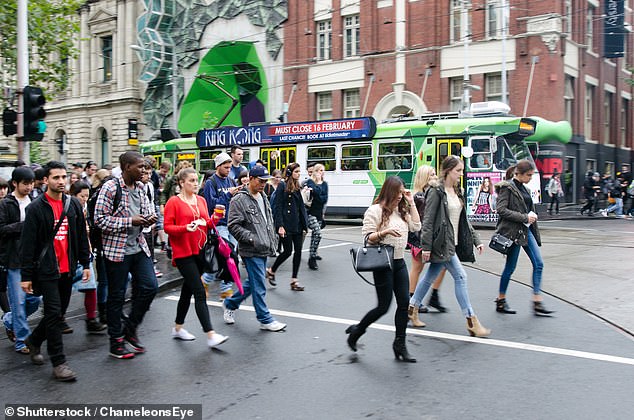Anthony Albanese’s government announces huge immigration change with overseas visitors to be slashed
- Influx of international students is being reduced
- Approximately 20,000 fewer visitors will be admitted
Australia is set to cut its intake of international students by almost 20,000, or around seven percent, a move that is blamed for the explosion in house prices and rents.
On Tuesday, Federal Education Minister Jason Clare announced that the government has set the number of international students for the 2025 calendar year at 270,000.
Universities will take in around 145,000 of these international students, while another 95,000 will be admitted to vocational education and training courses. According to the government, this will bring the numbers down to pre-pandemic levels.
The long-awaited move has been criticised by the higher education sector, which has become heavily reliant on foreign students paying tuition fees in advance.
However, the government says the move will strengthen integrity in the sector and prevent many newcomers from enrolling in courses that are nothing more than a means to obtain permanent residency.
She believes that limiting the number will increase ‘social freedom’ for the influx of students.
ABC economist Alan Kohler last week explained the conflicting goals of government and the tertiary sector.
“The current Labor government’s position is that universities have become addicted to foreign students and that they should not base Australia’s population growth on their desire for revenue,” Kohler wrote for The New Daily.
‘The government must manage it based on national interest, especially now that there is a housing shortage.’
Australia will cut its international student intake by almost 20,000 after record enrolments were reported this year
Figures for the year up to and including May 2024 showed that 810,960 international students were enrolled (17 percent compared to 2019 figures, before the corona crisis) in universities and vocational education programmes. The number of diploma presentations was also 16 percent higher, at 289,230 in the same period.
At the same time, the government is under pressure to limit net migration abroad, which has peaked at 528,000 in 2022-23, now at 260,000 this budget year.
On July 1, the government quietly doubled the application fee for international student visas from $710 to $1,600. Mr Clare defended the decision by saying it was a way to pump money into education initiatives.

On Tuesday, Federal Education Minister Jason Clare announced that the government will set the number of international students at 270,000 for the 2025 calendar year as part of the yet-to-be-determined National Planning Level (NPL).
While Tuesday’s announcement focused on the overall cap, individual universities will receive a specific amount under the International Student Profile (ISP).
George Williams, vice-chancellor and president of Western Sydney University, said international students in Western Sydney, a key growth area for the government, were vital to addressing Australia’s shortage of “key skills” such as nursing.
He said Western Sydney Airport was due to open in 2026 and the surrounding mini-city of Bradfield would also need “international students to fill the key skills gap”.
According to Prof. Williams, a high student cap would also limit the university’s ability to provide equal opportunity programs, such as food assistance and support, to students with low socioeconomic status.
“Our university has the highest number of students from low socioeconomic status in the country,” he told a Senate inquiry into the proposed restrictions on Monday.
‘Because what we hear from those students is that they are unable to study and eat, and international students are an important source of income for domestic students who would otherwise not be able to study at university without the support we can provide them.’
